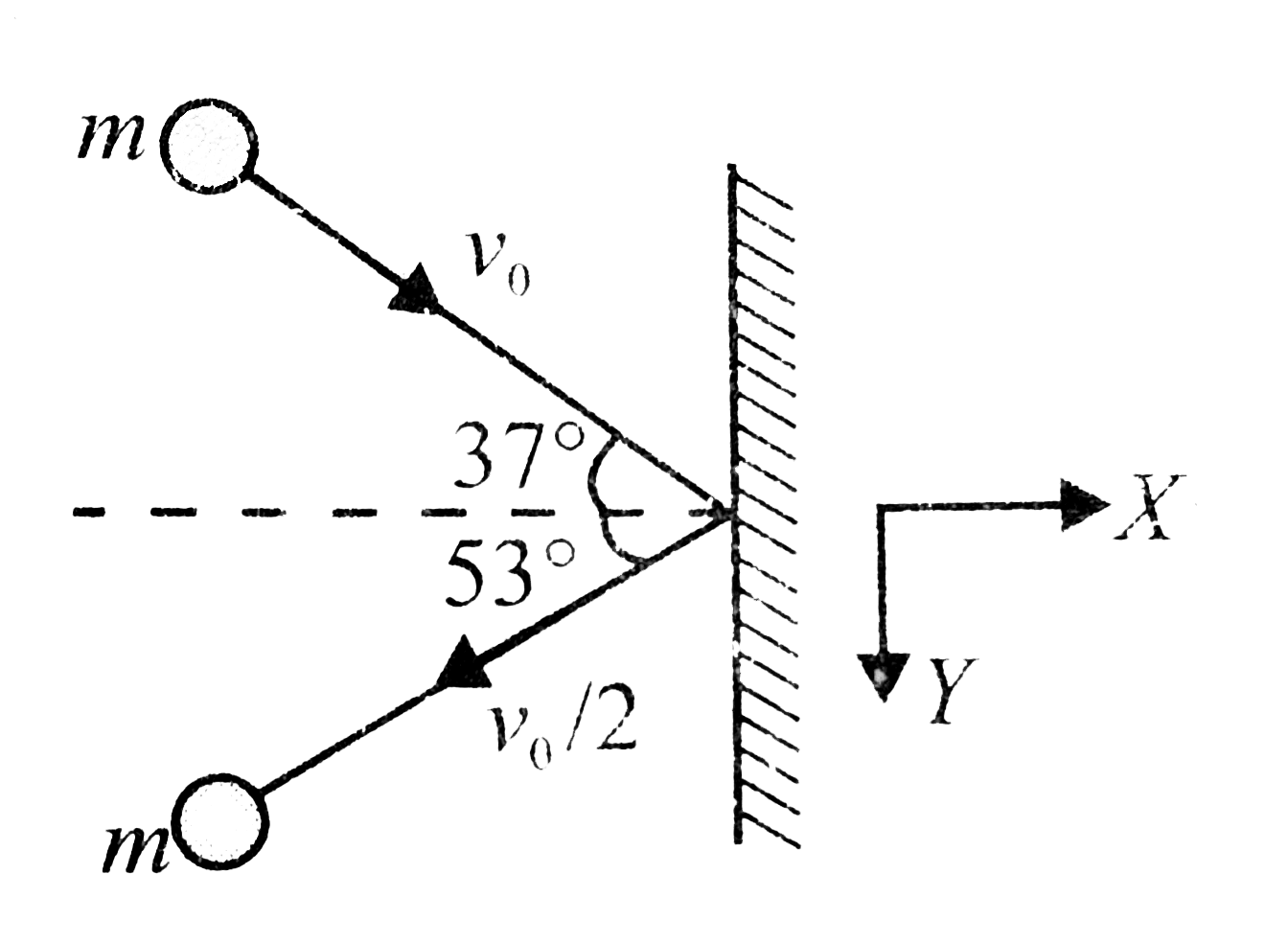A ball of mass m moving with velocity →u=uxˆi+uyˆj hits a vertical wall of infinite mass as shown in the figure. The ball slips up along the wall for the duration of collision and there is friction between the ball and the wall. Neglect the effect of gravity. Pick up the correct alternative.

The wall provides the ball with net impulse along the negative x-axis for the duration of collision.
The collision change only the x-component of velocity of thr ball
The collision change only the y-component of velocity of thr ball
The impulse provides by friction force to the ball for the duration of collision cannot be neglected in comparison to impulse provided by normal reaction
The wall exterts an impulsive normal reaction N on the ball along negative x-direction. Hence wall also exerts a friction force μN on the ball in negative y-direction. Hence both xandy components of velocities are changed. Hence d is only correct choose.
Topper's Solved these Questions
Similar Questions
A heavy ball of mass 2M moving with a velocity v0 collides elastically head on with a cradle of three identical ball each of mass M as shown in figure. Determine the velocity of each ball after collision.

View SolutionA particle of mass m strikes a wall with speed v at an angle 30∘ with the wall elastically as shown in the figure. The magnitude of impulse imparted to the ball by the wall is

View Solution
Knowledge Check
A ball of mass m moving with velocity v, collide with the wall elastically as shown in the figure. After impact the change in angular momentum about P is :
 .A2mvdB2mvdcosθC2mvdsinθDzero
.A2mvdB2mvdcosθC2mvdsinθDzeroTwo balls each of mass 'm' are moving with same velocity v on a smooth surface as shown in figure. If all collisions between the balls and balls with the wall are perfectly elastic, the possible number of collisions between the balls and wall together is
 A1B2C3DInfinity
A1B2C3DInfinityA ball of mass 1 kg moving with velocity →v=3ˆi+4ˆj collides with a wall and after collision velocity of the ball is −2ˆi+6ˆj . Which of the following unit vectors is perpendicular to wall?
A15(−3ˆi−4ˆj)B1√29(5ˆi+2ˆj)C1√40−(2ˆi+6ˆj)D1√40(5ˆi−2ˆj)
A ball of mass m moving with velocity u strikes another identical ball at rest. Find the velocities of the balls after the collision if the coefficient of restitution is e and the collision is head -on. Also , calculate the loss in K.E.
View SolutionTwo balls each of mass 'm' are moving with same velocity v on a smooth surface as shown in figure. If all collisions between the balls and balls with the wall are perfectly elastic, the possible number of collisions between the balls and wall together is

View SolutionA ball of mass m moves with speed v and stricks a wall having infinite mass and it returns with same speed then the work done by the ball on the wall is
View SolutionA ball of mass m moving with velocity v0 collides with a wall as shown in Fig. After impact it rebounds with a velocity' (v0)/2The component of impulse acting on the ball along the wall is

View SolutionA ball of mass 0.5 kg moving with a velocity of 2ms−1 strikes a wall normally and bounces back with the same speed. If the time of contact between the ball and the wall is one millisecond, the average force exerted by the wall on the ball is
View Solution
